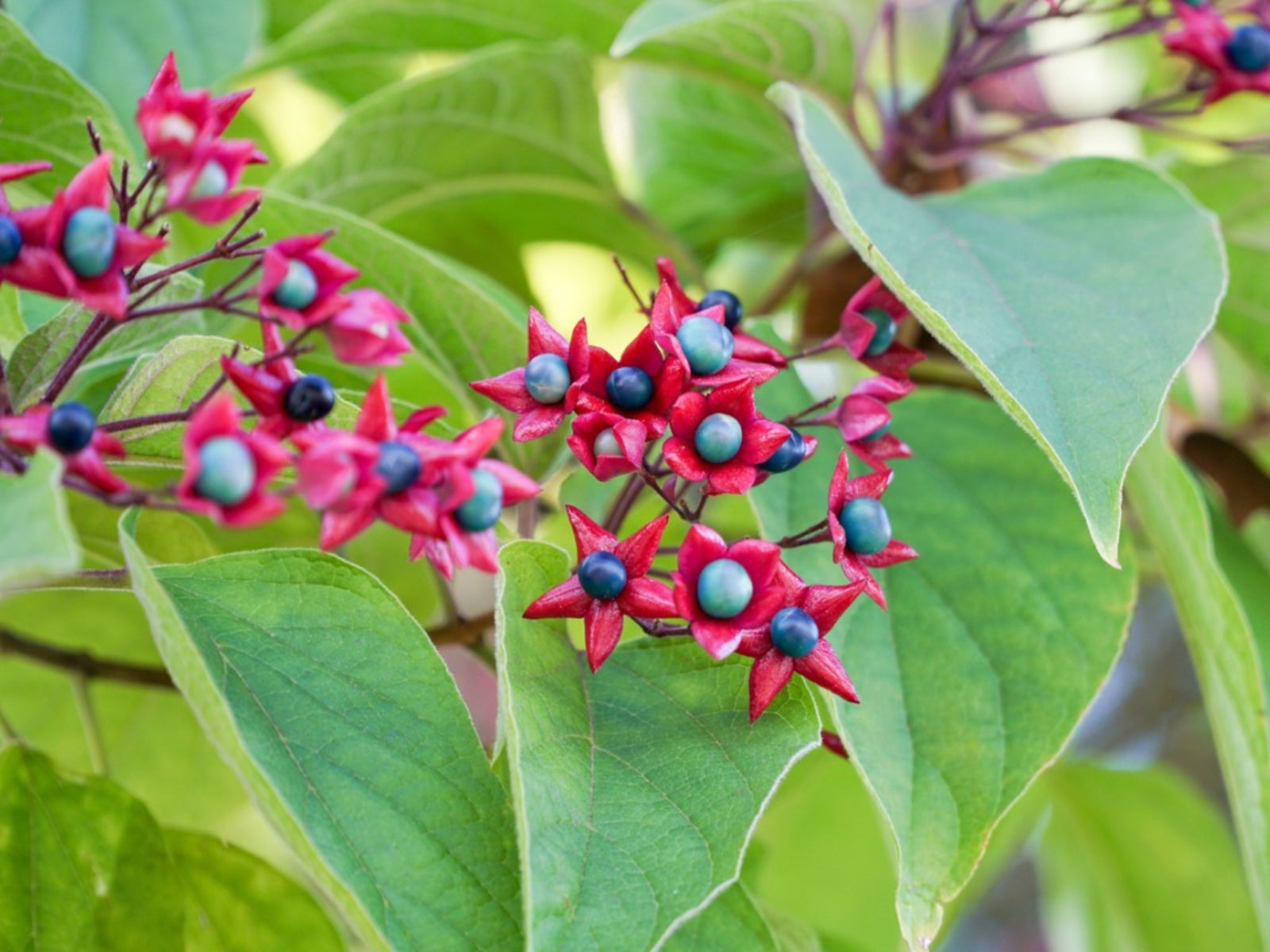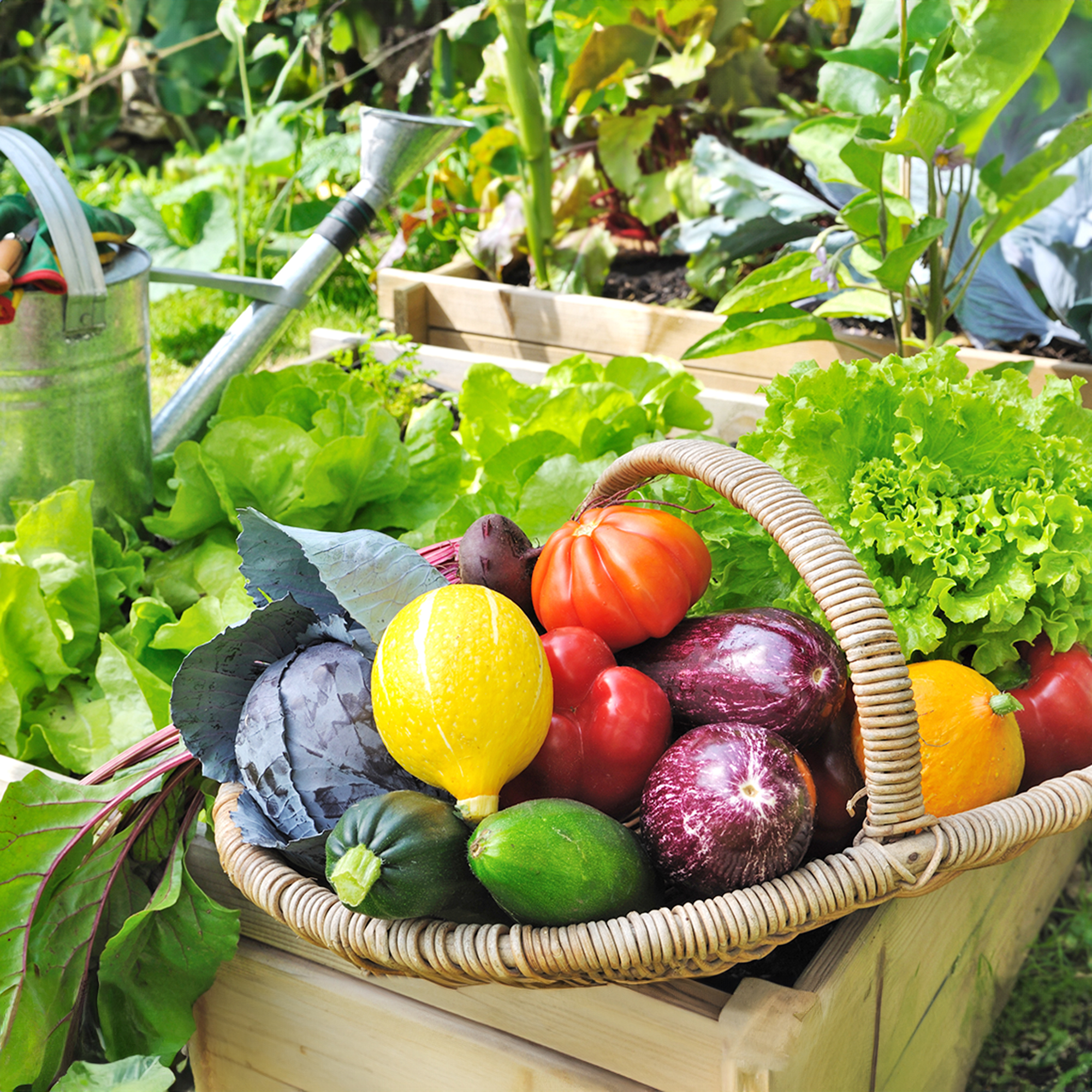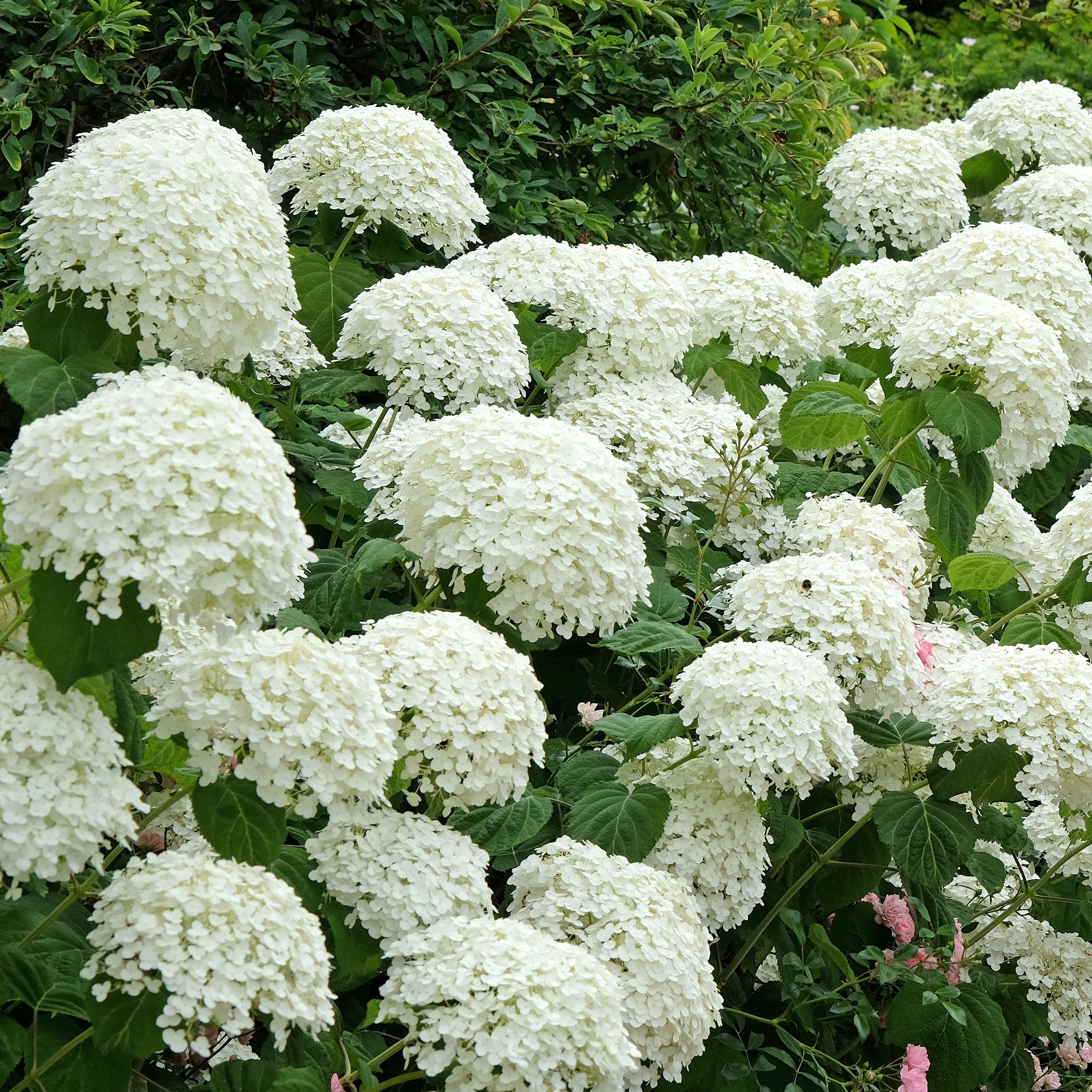Harlequin Glorybower Info: Tips For Growing A Harlequin Glorybower Shrub


What is harlequin glorybower? Native to Japan and China, harlequin gloryblower bush (Clerodendrum trichotomum) is also known as peanut butter bush. Why? If you crush the leaves between your fingers, the scent is reminiscent of unsweetened peanut butter, an aroma that some people find unappealing. While it isn’t the world’s most attractive tree when not in bloom, during flowering and fruiting, its glory is well worth the wait. If you’re interested in growing a harlequin glorybower bush, keep reading.
Harlequin Glorybower Information
Harlequin glorybower is a large, deciduous shrub that displays showy clusters of sweet-scented, white flowers in late summer. The jasmine-like blooms are followed by bright, bluish-green berries. Some varieties may turn color in milder climates but, usually, the large, heart-shaped leaves die with the first frost. Growing a harlequin glorybower bush isn’t difficult in USDA plant hardiness zones 7 through 11. However, harlequin glorybower info indicates that the plant may be hardy to zone 6b. The plant, which reaches heights of 10 to 15 feet (3 to 4.5 m.), displays a loose, rather unkempt, rounded or oval shape. You can prune harlequin glorybower to a single trunk and train it to grow as a small tree, or allow it to grow more naturally as a shrub. The plant is also suitable for growing in a large container.
Growing a Harlequin Glorybower
Harlequin glorybower tolerates partial shade, but full sunlight brings out the most attractive, denser foliage and bigger flowers and berries. The shrub adapts to well-drained soil, but may be damaged if the ground is persistently soggy. Harlequin glorybower care isn’t difficult, as it is relatively drought tolerant once established, although the tree benefits from irrigation during hot, dry weather. This shrub can be aggressive and suckers generously, especially in cooler climates. Harlequin glorybower care and control requires frequent removal of suckers in spring or fall.
Gardening tips, videos, info and more delivered right to your inbox!
Sign up for the Gardening Know How newsletter today and receive a free copy of our e-book "How to Grow Delicious Tomatoes".

A Credentialed Garden Writer, Mary H. Dyer was with Gardening Know How in the very beginning, publishing articles as early as 2007.
-
 15 Best Vegetables To Plant In May For A Summer Bounty Of Fresh Homegrown Produce
15 Best Vegetables To Plant In May For A Summer Bounty Of Fresh Homegrown ProduceGet planting your dream garden with these best vegetables to start in May – including options for direct sowing, indoor seed-starting, and planting seedlings.
-
 Native Hydrangea Varieties In North America – 8 Sensational Smooth And Oakleaf Varieties For Hardy Blooms And Multi-Season Beauty
Native Hydrangea Varieties In North America – 8 Sensational Smooth And Oakleaf Varieties For Hardy Blooms And Multi-Season BeautyHydrangeas are beloved for their enduring visual dynamics – but if you go native, they’re even better. Here are the most captivating native hydrangea varieties you can grow